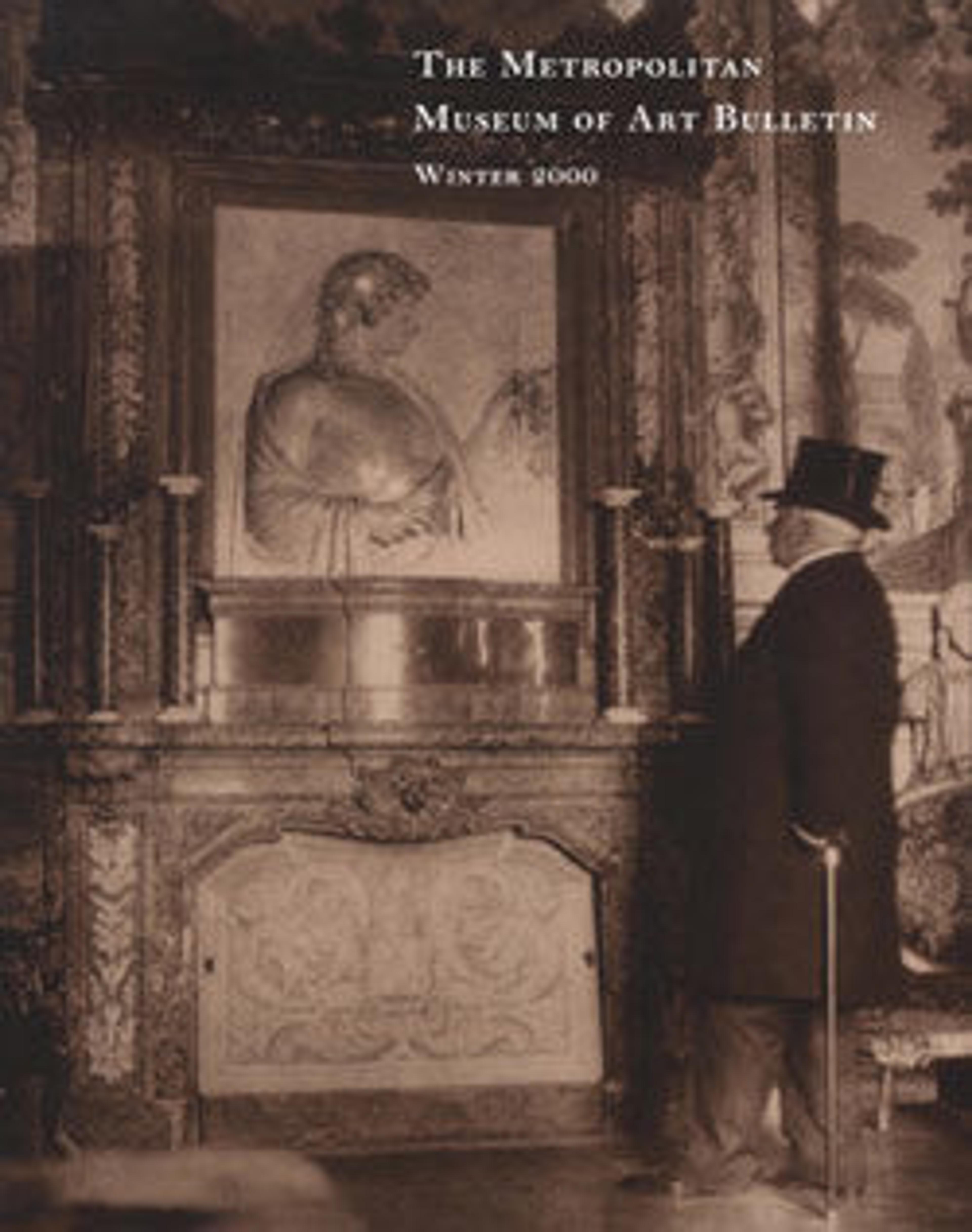Shrine
A splendid showcase of multiple materials and techniques, this miniature triptych was designed to inspire the private devotions of its owner (perhaps one of the Cardinals Madruzzo, successive Prince-Bishops of Trent). With precious metal tracery applied to expensive ebony, its hinged wooden doors invite handling. They lead not into a tiny Gothic chapel but onto an illusionistic nighttime landscape, busy with worshippers adoring the Christ Child. Atop the shrine is a Visitation scene with figures of Saints Anne and Elizabeth and an announcing angel. The doors open into a miniature triptych painted in gouache by Anton Mozart, with the Nativity at the center, the Presentation on the right wing, and the Circumcision on the left. A tiny panel illustrating the Flight into Egypt forms the predella. On the stem of the shrine a Christ in silver bears his cross to Calvary; beneath, his collapsed figure hangs from his mother's arms in a Pietà. On the four sides of the base, the Evangelists, identified by their attributes, record the events pictured above. Both artists signed this glorious collaboration; Walbaum, as one of wealthy Augsburg’s most renowned goldsmiths, would probably have been the more vaunted of the two. Walbaum and Mozart worked together on at least one other, strikingly similar, miniature triptych.
Artwork Details
- Title: Shrine
- Maker: Matthias Walbaum (German, Kiel 1554–1632 Augsburg)
- Artist: Miniatures by Anton Mozart (German, Augsburg 1573–1625 Augsburg)
- Date: 1598–1600
- Culture: German, Augsburg
- Medium: Ebony, silver, gilded silver, gouache on parchment
- Dimensions: Overall (confirmed): 16 15/16 × 7 1/4 × 4 1/8 in. (43 × 18.4 × 10.5 cm)
- Classification: Metalwork-Silver In Combination
- Credit Line: Gift of J. Pierpont Morgan, 1917
- Object Number: 17.190.823
- Curatorial Department: European Sculpture and Decorative Arts
More Artwork
Research Resources
The Met provides unparalleled resources for research and welcomes an international community of students and scholars. The Met's Open Access API is where creators and researchers can connect to the The Met collection. Open Access data and public domain images are available for unrestricted commercial and noncommercial use without permission or fee.
To request images under copyright and other restrictions, please use this Image Request form.
Feedback
We continue to research and examine historical and cultural context for objects in The Met collection. If you have comments or questions about this object record, please complete and submit this form. The Museum looks forward to receiving your comments.
